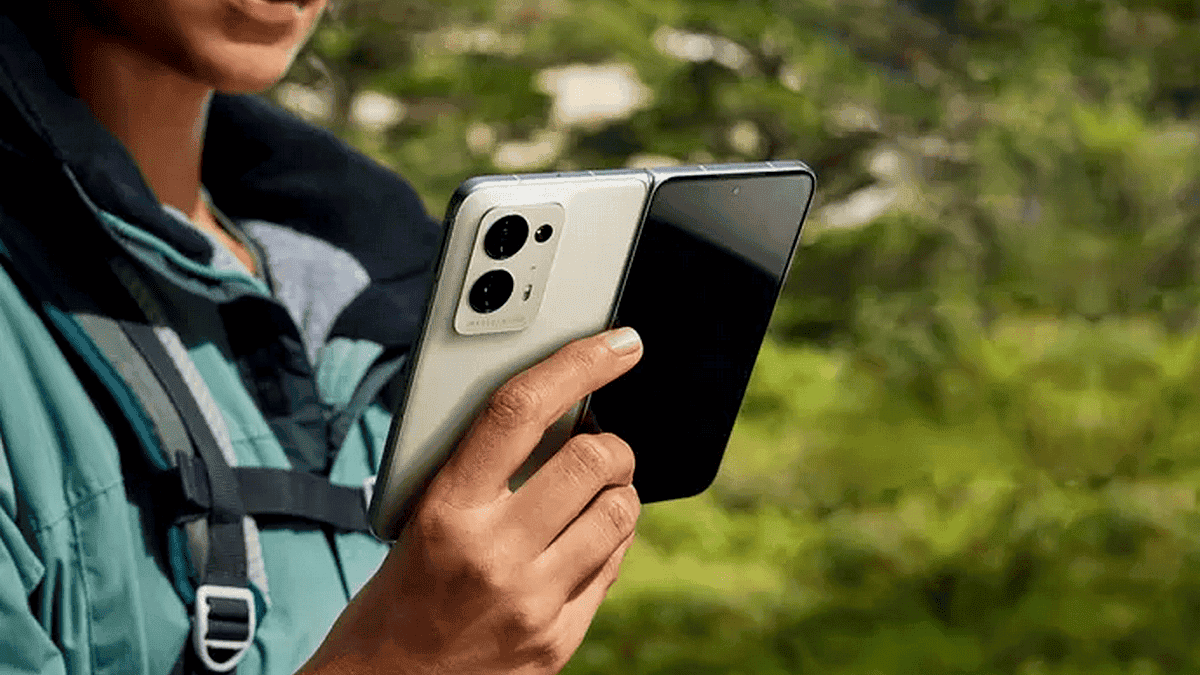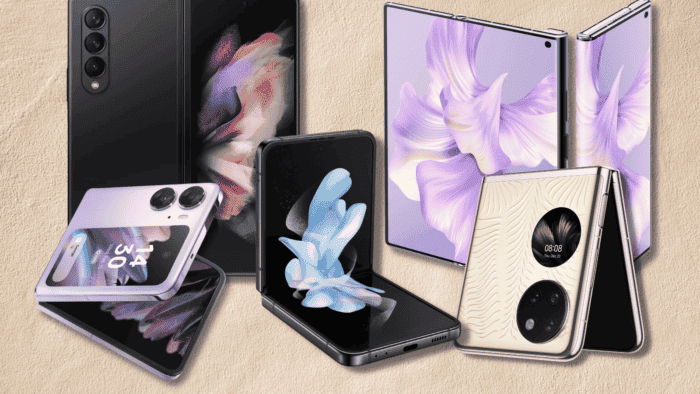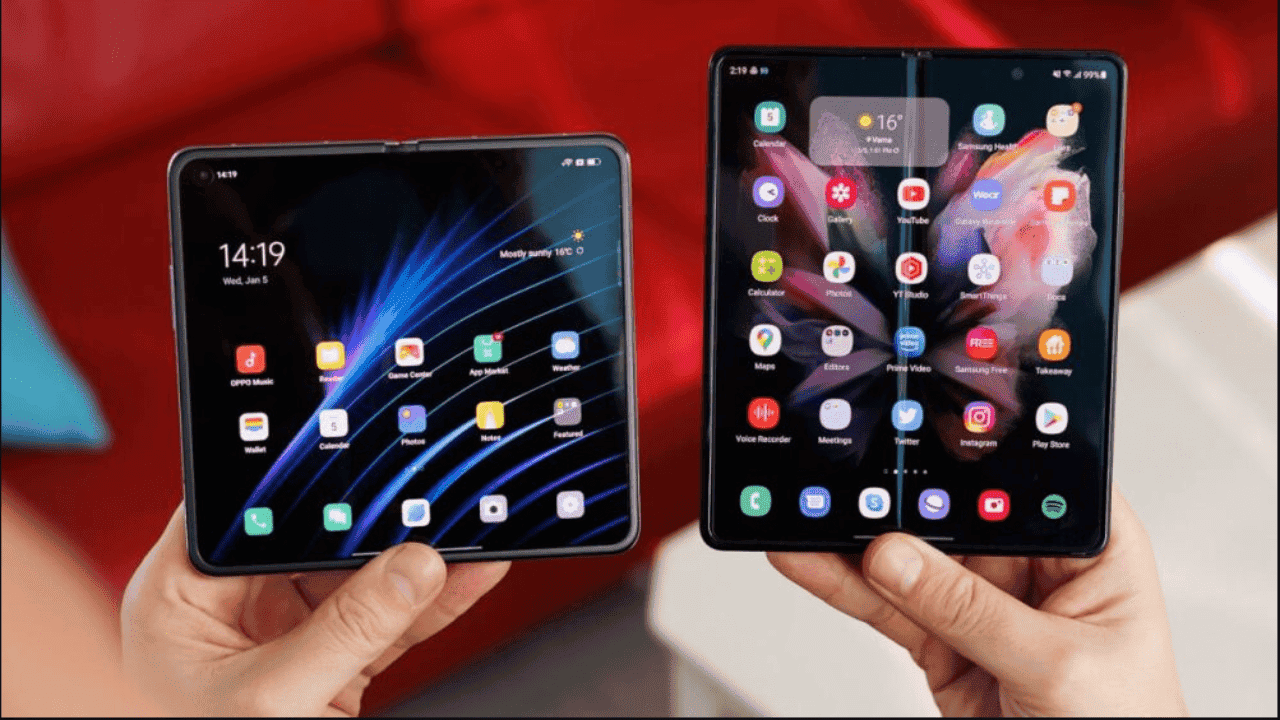Samsung’s Galaxy Fold and Flip have undoubtedly been the poster children of the foldable phone revolution. But the foldable phone market is far from a one-horse race. Brands like Oppo, Xiaomi, and Google are pushing the boundaries of design, hinge mechanisms, and display materials, creating a kaleidoscope of innovative foldable devices that challenge our very perception of what a phone can be.
Beyond the Galaxy Fold and Flip: The Evolving Landscape of Foldable Phones
Breaking the Mold: New Form Factors and Designs
Samsung may have popularized the inward-folding “book” and clamshell designs, but other manufacturers are exploring exciting alternatives. Oppo’s Find N3, for instance, boasts a unique landscape-oriented inner display, making it ideal for multitasking and productivity. Xiaomi’s Mix Fold 3 adopts a similar approach, but with an even larger 8.0-inch inner display that transforms into a mini tablet when unfolded.
Hinge of Destiny: The Unsung Hero of Foldable Tech
The hinge is the beating heart of any foldable phone. Its design and engineering directly impact the user experience, durability, and overall appeal of the device. Samsung has refined its hinge technology over several generations, with the Galaxy Z Fold5 and Z Flip5 boasting smoother operation and improved crease visibility.
But Oppo and Xiaomi are also making strides in hinge innovation. The Find N3’s “Flexion Hinge” allows the phone to fold flat without a gap, while Xiaomi’s Mix Fold 3 utilizes a “Micro Waterdrop Hinge” that minimizes the crease and protects the display from dust and debris.
The Material Matters: Display Innovations for a Bendable Future
The flexible display is another key element that defines the foldable phone experience. Early foldable phones suffered from durability issues due to the use of plastic substrates. However, the adoption of ultra-thin glass (UTG) and improved polymer displays has significantly enhanced the scratch and crease resistance of these devices.
Samsung has been a leader in UTG development, utilizing it in its Galaxy Z series phones. Oppo and Xiaomi are also investing in UTG technology, with the Find N3 and Mix Fold 3 both featuring UTG displays.
Looking beyond UTG, researchers are exploring even more futuristic display materials. Samsung Display recently unveiled a foldable OLED display with a “S-foldable” design, allowing the display to fold twice without compromising on durability or image quality. This paves the way for even more innovative form factors and functionalities in the future.
The foldable phone market is still in its nascent stage, but the rapid advancements in design, hinge mechanisms, and display materials are fueling its growth. With brands like Oppo, Xiaomi, and Google pushing the boundaries of innovation, we can expect to see even more exciting foldable devices in the coming years.
Here are some exciting possibilities for the future of foldable phones:
- More diverse form factors: Beyond the traditional “book” and clamshell designs, we can expect to see foldable phones with tri-fold displays, rollable displays, and even wraparound displays.
- Self-healing displays: Imagine a foldable phone with a display that can automatically repair minor scratches and creases. This technology is still in its early stages, but it holds immense potential for improving the durability and longevity of foldable devices.
- Integrated sensors and functionalities: Foldable phones could become the ultimate all-in-one devices. Equipped with advanced sensors and functionalities like health monitoring, augmented reality, and even holographic projections.
The future of foldable phones is brimming with possibilities. As technology continues to evolve and brands like Oppo, Xiaomi, and Google keep pushing the limits, foldable phones are poised to reshape the way we interact with mobile technology.
While the price point of these foldable phones are still a barrier to entry for many consumers, the increasing competition and technological advancements are likely to drive down costs and make them more accessible in the years to come. It’s not just about flashy tech and futuristic concepts; foldable phones hold the potential to improve our productivity, enhance our entertainment experiences, and even change the way we work and communicate.
Beyond the Tech: Addressing the Challenges
Despite the excitement surrounding foldable phones, there are still challenges that need to be addressed. App compatibility remains a hurdle, as many apps haven’t been optimized for the unique aspect ratio and functionality of foldable displays. Additionally, the durability of these devices, while improving, can still be a concern for some users.
To overcome these challenges, collaboration between phone manufacturers, app developers, and software companies is crucial. Standardized guidelines for foldable app development, along with continuous improvements in display materials and hinge mechanisms, will be key to building consumer confidence and paving the way for mainstream adoption..

A Symphony of Innovation: Foldables Beyond Smartphones
The foldable phone revolution is not just limited to smartphones. The technology holds immense potential for other devices, including laptops, tablets, and even e-readers. Imagine a laptop with a foldable display that transforms into a tablet or a compact e-reader that unfolds into a large-screen reading device. These are just a glimpse of the possibilities that foldable technology unlocks beyond the realm of smartphones.
Deeper Dive: Analyzing the Evolution of Foldable Phones
Market Dynamics and Disruption:
- The Battle for the Premium Segment: Samsung currently dominates the foldable market, but brands like Oppo, Xiaomi, and potentially Google are entering with competitive offerings. This could lead to price wars and ultimately benefit consumers.
- The China Factor: China is a major driver of the foldable phone market, and its preference for innovative designs and competitive pricing puts pressure on established players like Samsung. Local brands like Oppo and Xiaomi have an advantage in understanding Chinese consumer preferences.
- Beyond Samsung’s Shadow: Smaller brands like Motorola and TCL are also entering the foldable market with more affordable options, potentially democratizing the technology. However, they need to focus on design and durability to truly compete.
Technological Frontiers:
- The Next Chapter: Beyond UTG: While UTG has improved durability, researchers are exploring even more flexible and resilient materials like LTPO OLEDs and self-healing displays. These advancements could solve the crease issue and open doors for more daring form factors.
- Software Symphony: App compatibility remains a bottleneck. Collaboration between phone makers, app developers, and Google’s Android team is crucial to creating optimized experiences and smooth transitions between folded and unfolded states.
- Multitasking Powerhouse: Foldable phones have the potential to become productivity powerhouses with multi-window capabilities and larger screen real estate. Integration with productivity apps and stylus support will be key.
Challenges and Opportunities:
- Durability Dilemma: Despite improvements, foldable phones are still more fragile than traditional smartphones. Addressing concerns about drops, scratches, and dust ingress is crucial for wider adoption.
- Battery Blues: The power needs of large foldable displays can be a concern. Advancements in battery technology and optimized software are needed to address this.
- Sustainability Crossroads: Foldable phones are complex and resource-intensive to manufacture. Sustainable manufacturing practices and recyclable materials are essential to minimize the environmental impact.
The Road Ahead: Folding into the Future
Foldable phones are not just a niche trend; they represent a paradigm shift in mobile technology. While challenges remain, the rapid advancements in design, materials, and software are paving the way for a future where foldable devices are not just a luxury, but an essential part of our lives.
With a focus on addressing user concerns, fostering app compatibility, and pushing the boundaries of innovation, the foldable phone market is poised for explosive growth. The brands that can strike the right balance between cutting-edge technology, practical features, and affordability will be the ones to shape the future of this exciting new chapter in mobile tech.
In Conclusion: A Glimpse into the Future
The foldable phone market is just unfolding, and the future looks bright. With a continuous stream of innovation from brands like Oppo, Xiaomi, and Google, we can expect to see foldable devices become more diverse, affordable, and integrated into our everyday lives. These devices are not just technological marvels; they represent a shift in how we interact with technology, offering increased productivity, immersive entertainment, and a glimpse into a future where our personal devices adapt to our needs and fit seamlessly into our lives. As the pages of this technological chapter unfold, one thing is certain: the journey of foldable phones has just begun.




![Samsung Galaxy Z Fold4 vs. Honor Magic Vs [Comparison] Headline](https://www.gizchina.com/wp-content/uploads/images/2023/05/Samsung-Galaxy-Z-Fold4-vs.-Honor-Magic-Vs-Comparison-225x125.jpg)

